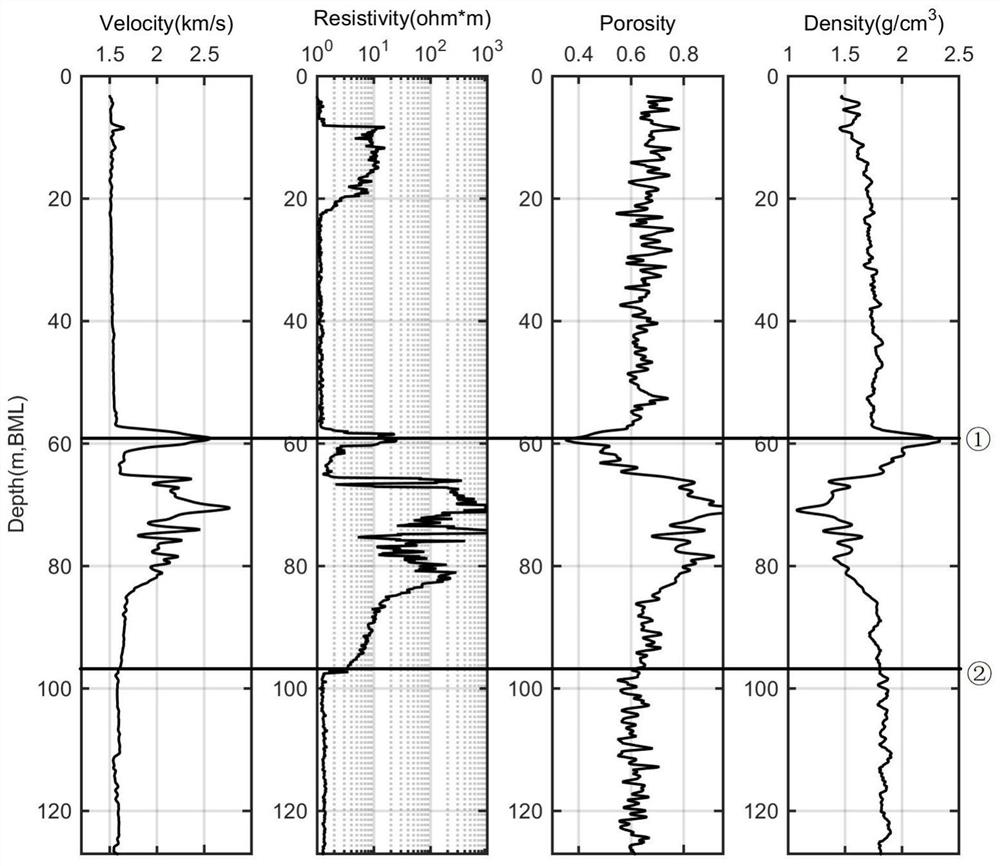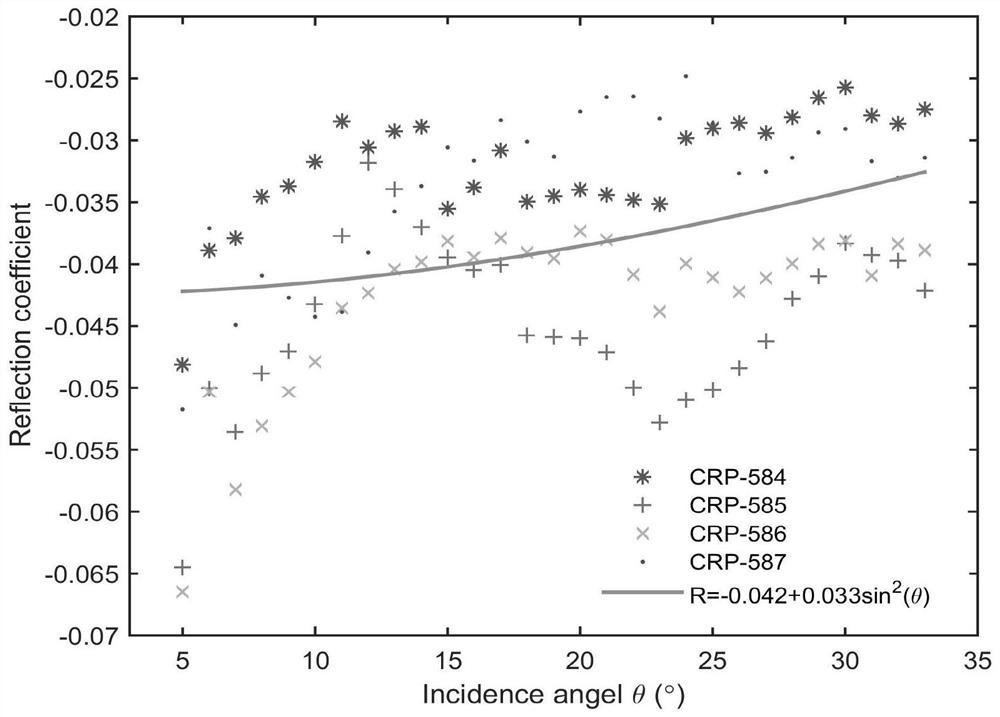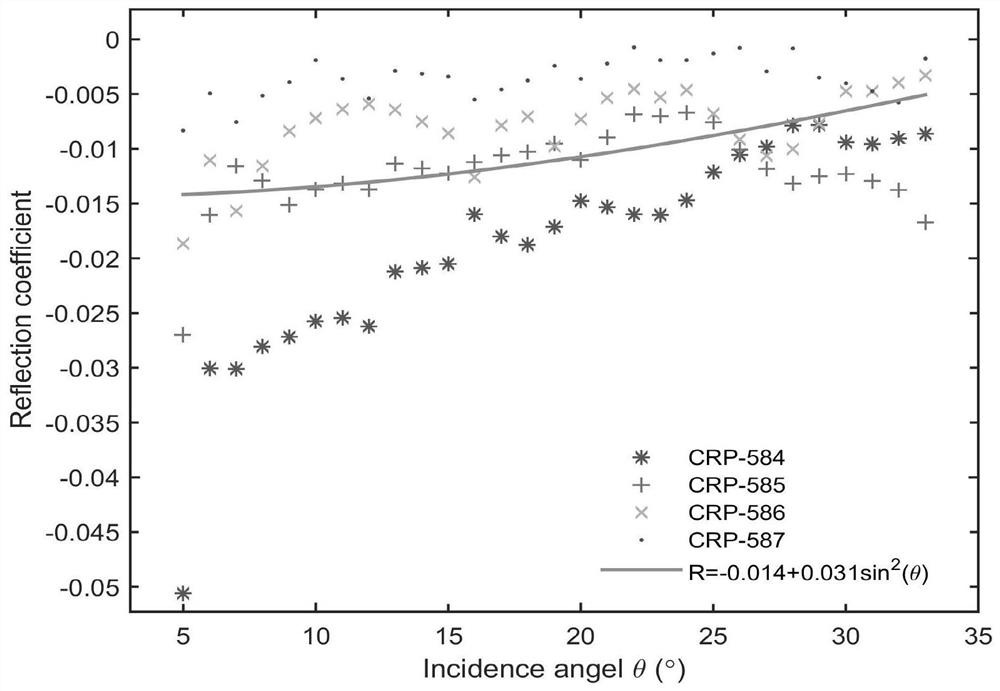Method for identifying porous natural gas hydrate by utilizing AVO attribute analysis
A natural gas and hydrate technology, applied in the field of geological exploration and energy exploration, can solve the problems of accuracy, increase of compressional and shear wave velocity, and low reliability of natural gas hydrate, so as to improve reliability, high drilling cost and save The effect of drilling costs
- Summary
- Abstract
- Description
- Claims
- Application Information
AI Technical Summary
Problems solved by technology
Method used
Image
Examples
Embodiment 1
[0042] The method of using AVO analysis to identify pore-type gas hydrates includes the following steps:
[0043] (1) Use seismic data to invert the actual P-wave velocity Vp or S-wave velocity Vs of the formation. According to the GMGS2-08 site logging curve, the high-velocity anomaly area is determined, and the reflective interface is selected as the research location①, as shown in figure 1 shown;
[0044] (2) Extract the reflection amplitude values of the adjacent CRP gathers (CRP584-CRP587) at the GMGS2-08 station at the selected reflection interface position ① from the pre-stack seismic data;
[0045] (3) Calculate the relationship between the reflection coefficient and the incident angle according to the reflection amplitude value, corresponding to the CRP gathers from 584 to 587, which are represented by asterisks, plus signs, crosses and dots respectively, using the Shuey approximate equation (R(θ) =A+Bsin 2 θ) to fit the data to obtain a fitted curve, represented...
Embodiment 2
[0053] The method of using AVO analysis to identify pore-type gas hydrates includes the following steps:
[0054] (1) Use seismic data to invert the actual P-wave velocity Vp or S-wave velocity Vs of the formation. According to the GMGS2-16 site logging curve, the high-velocity anomaly area is determined, and the reflective interface position ① is selected as the research position, as shown in Figure 4 shown;
[0055] (2) Extract the reflection amplitude values of the adjacent CRP gathers (CRP900-CRP903) at the GMGS2-08 station at the selected reflection interface position ① from the pre-stack seismic data;
[0056] (3) Calculate the relationship between the reflection coefficient and the incident angle according to the reflection amplitude value, corresponding to the CRP gathers from 900 to 903, which are represented by asterisks, plus signs, crosses and dots respectively, using the Shuey approximate equation (R(θ) =A+Bsin 2 θ) to fit the data to obtain a fitted curve, ...
PUM
 Login to View More
Login to View More Abstract
Description
Claims
Application Information
 Login to View More
Login to View More - R&D
- Intellectual Property
- Life Sciences
- Materials
- Tech Scout
- Unparalleled Data Quality
- Higher Quality Content
- 60% Fewer Hallucinations
Browse by: Latest US Patents, China's latest patents, Technical Efficacy Thesaurus, Application Domain, Technology Topic, Popular Technical Reports.
© 2025 PatSnap. All rights reserved.Legal|Privacy policy|Modern Slavery Act Transparency Statement|Sitemap|About US| Contact US: help@patsnap.com



